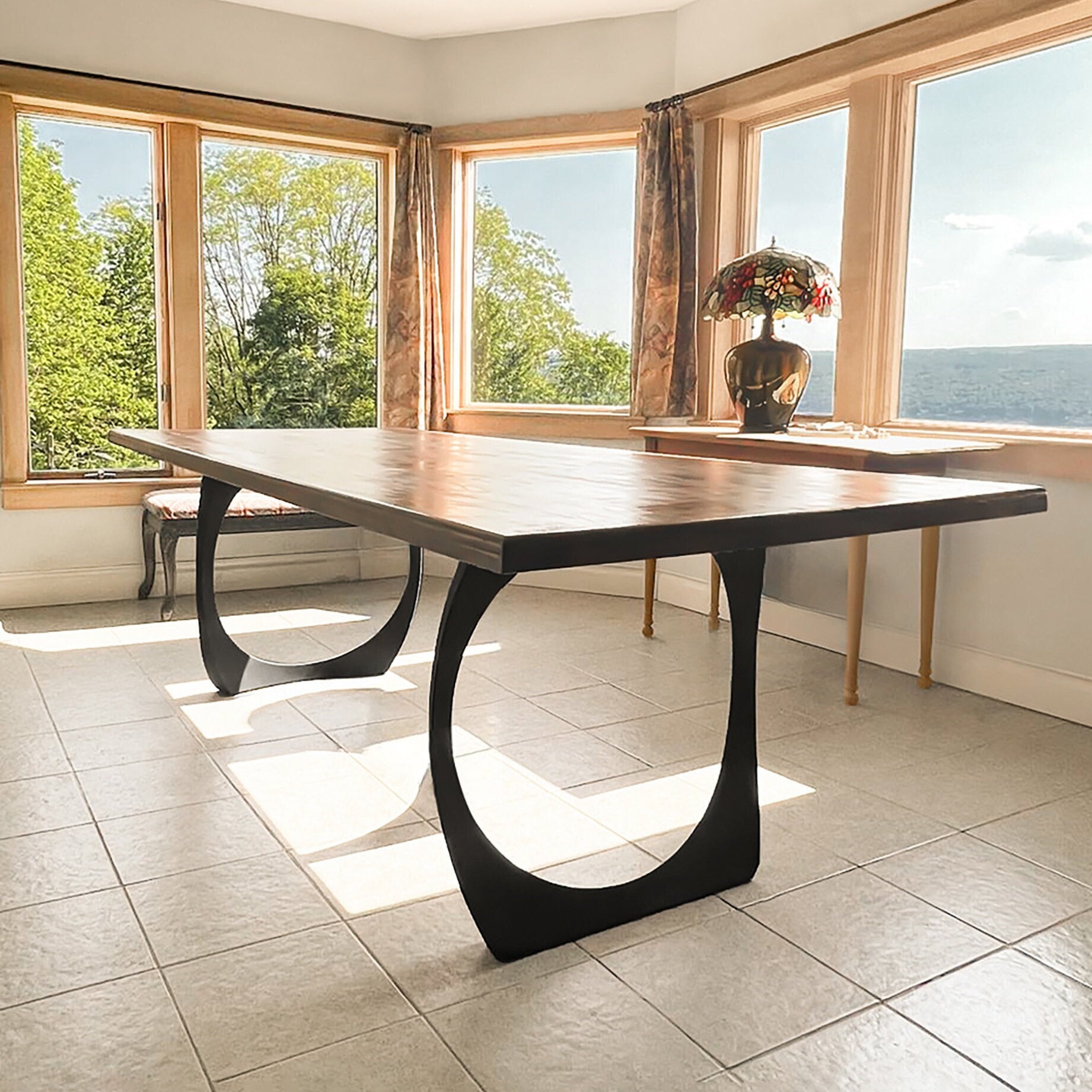Special Dining Room Table Legs to Transform Your Dining Area
Special Dining Room Table Legs to Transform Your Dining Area
Blog Article
A Comprehensive Check Out Table Leg Styles: Locating the Suitable Suit
Selecting the ideal eating table leg design is vital for both aesthetic allure and sensible capability. Standard 4 legs supply timeless style and security, while the stand base provides raised legroom and a modern appearance. For those with bigger tables, trestle legs make sure durable assistance, whereas barrette legs present a mid-century modern-day vibe with their minimalist style. The x-shaped legs blend modern design with boosted stability. Each of these alternatives brings unique benefits, making the selection greater than just a matter of choice. Check out better to discover which style flawlessly matches your dining area and way of living.
Traditional 4 Legs
Amongst the various types of table leg styles, the typical four-leg layout continues to be an ageless choice for several households. This timeless configuration uses a harmonious blend of capability and visual appeals, making it a perennial fave. Four legs offer balanced assistance, making certain the table remains secure and with the ability of bearing substantial weight. This is particularly beneficial for households that frequently host large celebrations or use their eating table for multiple objectives, such as work or crafting.
From a visual point of view, the typical four-leg layout can be conveniently adapted to various indoor styles. Whether crafted from wood, metal, or a mix of products, these legs can be elaborately sculpted, sleek and minimalistic, or anything in between. Their convenience enables them to match both rustic and modern setups flawlessly.
In addition, the simple structure of the four-leg style helps with ease of activity and placement within a room. Unlike more complex bases, this design minimizes blockages, offering ample legroom for restaurants. In summary, the conventional four-leg eating table leg style weds withstanding beauty with practical capability, making it a sharp choice for those looking for both kind and function in their dining furnishings.
Stand Base
Frequently commemorated for its sophisticated and space-efficient style, the stand base is a prominent alternative to the conventional four-leg configuration in dining table leg styles. Without corner legs, restaurants are managed better liberty of movement, making it an ideal option for round and oblong tables that advertise even more intimate and inclusive events.
The central column itself provides a canvas for intricate layouts and creative expressions, adding a component of aesthetic interest under the table. In summary, the stand base integrates functionality with design, making it a fine-tuned and practical alternative for diverse eating atmospheres.
Trestle Legs
Trestle legs provide a durable and timeless structure for dining tables, identified by their horizontal cross-bracing and sturdy assistance beams. Stemming from medieval times, this style has advanced yet kept its essential framework, making it a perennial fave in both traditional and modern setups. The central trestle light beam, typically sustained by two or even more vertical articles, offers phenomenal stability, permitting for larger table lengths without the demand for additional legs.
A considerable advantage of trestle leg tables is the sufficient legroom they supply. Unlike tables with four corner legs, the lack of obstructions at this link the table's edges supplies unimpeded area for chairs and restaurants, boosting comfort and availability. This makes trestle tables ideal for fitting bigger celebrations, whether in a dining space or a reception hall.
From rustic farmhouse to smooth modern styles, trestle legs can be tailored to suit private preferences. Their long-lasting appeal and practical benefits make trestle legs an engaging selection for those looking for both style and functionality in their dining table.
Hairpin Legs

The allure of hairpin legs hinges on their simpleness and flexibility - dining room table legs. Offered in a series of materials, consisting of steel and brass, they can be ended up in numerous colors to enhance various interior styles. Whether combined with a rustic wood tabletop or a contemporary glass surface area, barrette legs easily blend performance with a touch of classic beauty
Resilience is one more remarkable attribute of hairpin legs. Despite their delicate appearance, these legs are crafted to birth significant weight, ensuring the dining table stays steady and safe. In addition, they are relatively easy to install, making them a popular option for DIY lovers and expert furnishings manufacturers alike.
X-Shaped Legs

Built from products such as steel, wood, or a mix of both, X-shaped legs can be published here customized to match different layout choices. Steel legs frequently offer a sleek and commercial feeling, ideal for loft-style apartment or condos and modern dining rooms. On the other hand, wooden X-shaped legs use a warmer, more rustic charm, ideal for farmhouse or diverse interiors. The adaptability in products allows property owners to tailor their table to better fit their overall style system.
In addition, the design behind X-shaped legs ensures even weight distribution, reducing the danger of tottering and improving longevity. This makes them specifically well-suited for larger table that require additional support. Essentially, X-shaped legs blend practical engineering with modern visual appeals, making them a timeless choice for diverse dining environments.
Conclusion
A thorough understanding of eating table leg designs reveals the distinctive attributes and benefits of each layout. Trestle legs make certain robust assistance for bigger tables, and hairpin legs present a mid-century contemporary visual.
Report this page